Ways of development of Russian submarine ballistic missiles
The topic about “Bulava” and the question that “about ** or all polymers” was not considered only, probably, by a very lazy journalist. Talk about the fact that the "Bulava" is an analogue of a 40-year-old rocket, that it is an inadequate replacement for "Satan", but ... and everything ends up as long as it is - everything has been stolen.
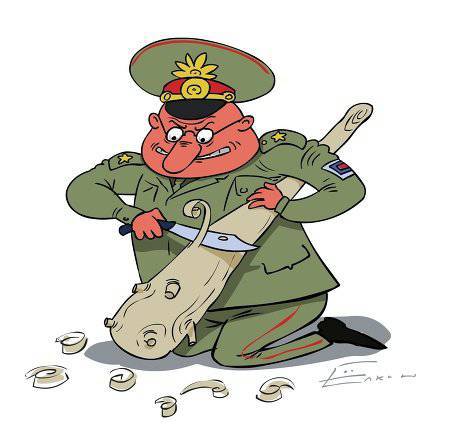
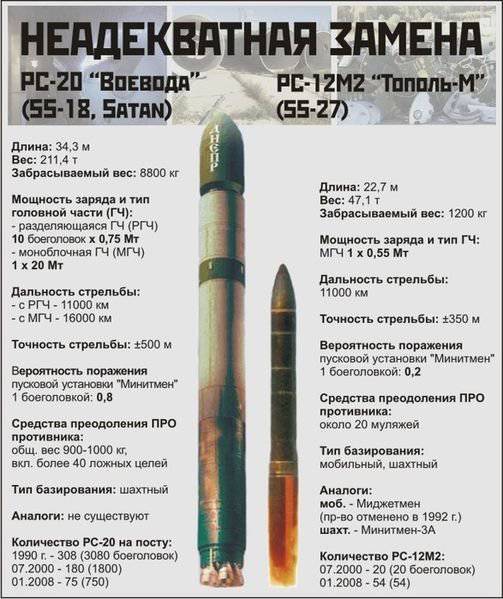
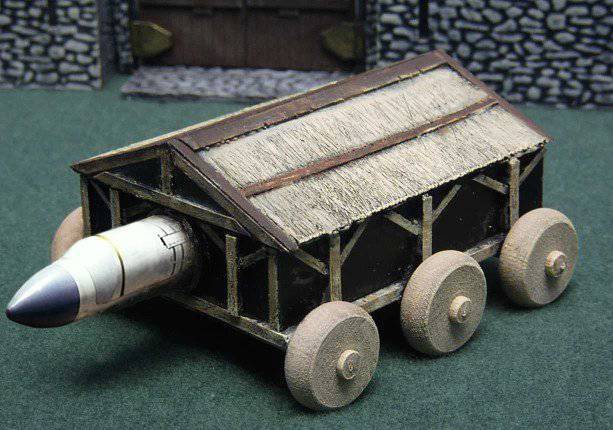
Why did you refuse to develop “Bark” with its high degree of readiness? Why was the development of a promising new SLBM transferred from the traditional maritime center named after academician V.P. Makeyev to MIT? Why do we need “Bulava” if “Sineva” flies? Cut the boats of the project 941 "Shark" ("Typhoon" on the NATO classification), the betrayal Medveputov? Future marine component of the SNF?
As you can see, there are many questions and it seems that I am trying to grasp the immensity. It is possible that this is so, but as you have already noticed, sometimes the article is not as interesting as the comments under it. I do not exclude that in this way, in the course of discussions and discussions, many white spots will cease to be so precisely during conversations from below)))
SLBMs have a wide range of distances: from 150 km (R-11FM rocket as part of the D-1, 1959 complex) to 9100 km (R-29РM rocket as part of the D-9RM complex, 1986 is the legendary "Sinev" basis of the sea shield). Early versions of SLBMs were launched from a surface position and required a lengthy preparation procedure for launch, which increased the vulnerability of submarines armed with such missiles. The most familiar example is from the movie “K-19” (the P-13 complex was originally used on it, which, if you don’t particularly go into details, didn’t have a fundamental difference from P-11М). In the future, with the development of technology, the launch from a submerged position was mastered: “wet” - with preliminary mine flooding and “dry” - without it.
Most of the SLBMs developed in the USSR used liquid rocket fuel. Such missiles were well developed and had excellent characteristics (P-29РМ has the highest energy-mass perfection among all the ballistic missiles of the world: the ratio of the missile load weight to its launch mass, reduced to a single flight range. For comparison, this indicator is 46 in Sinevy units, the American sea-launched ballistic missile Trident-1 - 33, and the Trident-2 - 37,5), but they have several significant drawbacks, primarily related to operational safety.
The fuel in such rockets is nitrogen tetroxide as an oxidizing agent and asymmetric dimethyl hydrazine as a fuel. Both components are highly volatile, corrosive and toxic. And although the rockets use an ampoule filling, when the rocket comes from the factory already filled, the possible depressurization of the fuel tanks is one of the most serious threats to their operation. There is also a high probability of incidents during unloading and transportation of liquid SLBMs for subsequent disposal. Here are the most famous:
During the operation there were several accidents with the destruction of rockets. 5 people died and one submarine was lost - K-219.
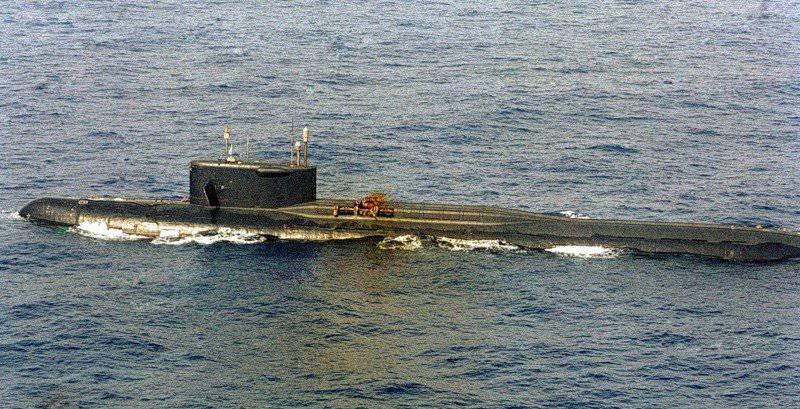
When loading in violation of the process of loading and unloading rocket from a height 10 m fell to the pier. The oxidizer tank was destroyed. Two people from the loading batch died from exposure to oxidant vapor on unprotected respiratory organs.
Three times the rocket was destroyed in the mine of the boat on duty.
At the exercises "Ocean-76" on the boat K-444 conducted a pre-launch preparation of three missiles. Two missiles were launched, and the third one was not fired. The pressure in the tanks of the rocket due to a number of human errors was dropped to the ascent of the boat. The pressure of the outboard water destroyed the tanks of the rocket, and during the ascent and drainage of the mine, the oxidizer leaked into the mine. Thanks to the skillful actions of the personnel, there was no development of an emergency.
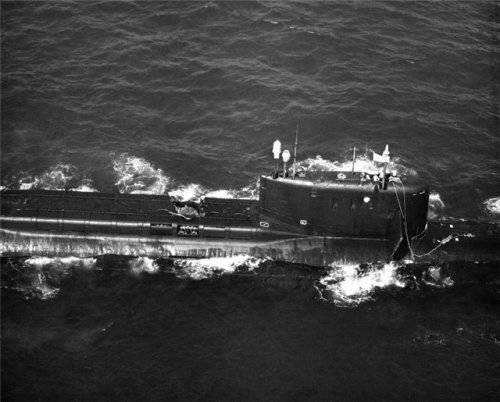
In 1973, the K-219 boat, located at a depth of 100 m due to the spurious actuation of the irrigation system with the mine drainage valve and the manual valve open, on the bridge between the main drainage line of the boat and the mine drainage pipeline, there was a missile shaft with outboard water. The pressure in the 10 atmospheres destroyed the missile tanks. When the mine was drained, a rocket fuel ignited, but the timely operation of the automatic irrigation system prevented further development of the accident. The boat returned safely to base.
The third incident also occurred on the K-219 3 October 1986 boat. For unknown reasons, water began to flow into the missile shaft during a dive after a communication session. The crew tried to turn off the automation and drain the water with non-standard means. As a result, at first the pressure equaled the outboard and the missile tanks collapsed. Then, after the mine was drained, the fuel components ignited. Disabled irrigation automation did not work and an explosion occurred. The cover of the missile shaft was torn off, a fire started in the fourth rocket compartment. Extinguish the fire with their own forces failed. The personnel left the boat, the compartments were filled with seawater, and the boat went to the bottom. During the fire and smoke in the 4 and 5 compartments, 3 people were killed, including the commander of the warhead-2.
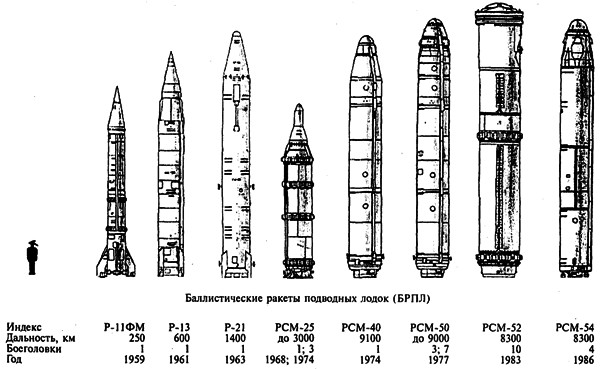
The operating experience of the PCM-25 missiles was analyzed and taken into account when developing new complexes such as the PCM - 40, 45, 54. As a result, during the operation of subsequent rockets there was not a single case of death. Whatever you may say, the sediment remained. Still, the combination of harsh marine environment and explosive liquid fuels is not the best possible neighborhood.
Therefore, starting with 1960-x, in the USSR, work was carried out on the development of solid-propellant SLBMs. However, with the traditional leadership of the USSR in the development of liquid missiles and the lag behind the United States in the development of solid propellant, at that time it was not possible to create a complex with acceptable characteristics. The first Soviet two-stage SLBM on solid fuel P-31 as part of the D-11 complex was put into trial operation only in 1980. The carrier of twelve such missiles was the only K-140 SSBN that received the 667АМ design index ("Yankee-II" or "Navaga -M ")
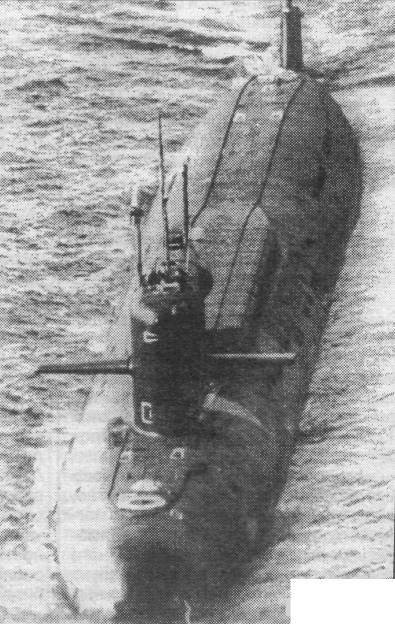
The new P-31 rocket, with a launch mass of 26,84 t, close to the liquid fuel P-29 (33,3 t) that was already in service at that time, had a twice smaller range (4200 km versus 7800 km), twice the drop weight and low accuracy (QUO 1,4 km). Therefore, it was decided not to launch the D-11 complex in serial production, and it was removed from service in 1989. In total, the 36 P-31 series of missiles were launched, of which 20 was used up in the process of testing and practical shooting. In the middle of 1990, the Ministry of Defense decided to dispose of all existing missiles of this type by shooting. From 17 September to 1 December 1990, all the rockets were successfully launched, after which 17 December 1990 K-140 went to Severodvinsk for cutting into metal.
The next Soviet solid-fuel rocket - the three-stage R-39 - turned out to be very large (length 16 m and diameter 2,5 m). To accommodate the D-19 complex of twenty R-39 missiles, a submarine of project 941 "Shark" (NATO designation "Typhoon") of a special layout was developed. This largest submarine in the world had a length of 170 m, a width of 23 m and an underwater displacement of almost 34 tons. The first submarine of this type became part of the Northern fleet December 12 1981.
Then I’ll back off a little, with all my admiration for the submarines of this project, I can’t help repeating the words of the Malakhit design bureau - “the victory of technology over common sense”! In my understanding, large surface ships should be large enough to arouse fear to a potential enemy by their very appearance. Submarines should be on the contrary, as little as possible and more secretive. However, this does not mean that they had to be so stupidly sawed into needles! (as pictured above)
After a series of unsuccessful launches, fine-tuning of the rocket and test operation on the head "Shark" in the 1984 complex, the D-19 complex was put into service. However, this rocket was inferior in characteristics to the American Trident complex. In addition to dimensions (length 16 m versus 10,2 m, diameter 2,5 m versus 1,8 m, weight with the launch system 90 t. Against 33,1 t.) P-39 had a smaller range - 8 300 km against 11 000 and accuracy - CVO 500 m against 100 m. Therefore, since the middle of the 1980-x, work has begun on a new solid-propelled SLBM for Sharks - the Bark missile.
The elaboration of a variant of the deep modernization of the SLBM P-39 started in the first half of the 1980-s. As of 1980, design documentation has already been developed. Resolution of the USSR Council of Ministers, adopted in November 1985, instructed to begin the experimental design development of the D-19UTTH complex in order to surpass the characteristics of the Trident-2 SLBM. In March, 1986 adopted a resolution of the Council of Ministers of the USSR on the development of the D-19UTTH Bark complex, and in August on 1986, the Decree on OCR D-19TX was adopted with the placement of the complex on the upgraded SSBN of 941U avenue.
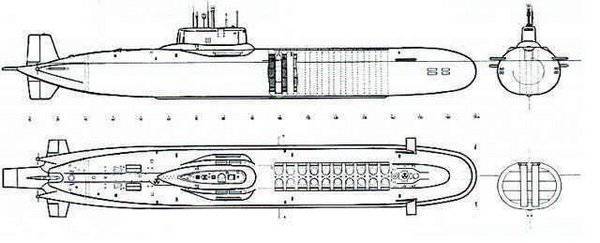
A draft design of the D-19UTTH complex was prepared in March 1987. In the period from 1986 to 1992, work was successfully carried out to test the strength of rocket components. After 1987, tests were carried out of components and assemblies on the subject of ROC "Bark" on the vacuum-dynamic stand of SKB-385. The first version of the rocket project provided for the use of OPAL octogenic fuel at the 1 stage and, at the 2 stage and 3 stage, higher energy fuel TTF-56 / 3 produced by the Pavlograd chemical plant (now Ukraine).
In May, 1987 approved the conversion schedule for 941UTTH Pr. At Sevmashpredpriyatiya. 28 November 1988 of the USSR Council of Ministers adopted a Resolution “On the Development of Maritime Strategic Nuclear Forces”, which ordered to complete the development of the D-1991UTH complex by the beginning of the XIII five-year plan (before 19) and begin to re-equip 941 pr. By the decision of the Ministry of Industry and the Navy, re-equipment and repair of the head submarine Ave 941 (serial number 711) was assigned to the Zvezdochka shipyard. It was assumed that the shipyard Zvezdochka will carry out the modernization of the submarine. “Sevmorzavod” was instructed to prepare the submersible PS-65М launch complex for testing the missile at the test site and the experimental PLRB Ave. 619 for testing and testing the D-19UTTH complex with the 3М91 missile.
Until 1989, the financing of the creation of the D-19UTTH complex was carried out through the line of the USSR Ministry of General Engineering. From 1989, according to the State Contract with the USSR Ministry of Defense. In 1989, the general designer of the Rubin Central Design Bureau (SSBN) S.N. Kovalev turned to MSGorbachev, General Secretary of the Central Committee of the CPSU, with proposals for the further development of naval strategic nuclear forces. As a result, the Resolution of the USSR Council of Ministers of 31.10.1989 was issued, in which the order of development of naval strategic nuclear forces at 1990 and the beginning of 2000 were defined. SSBN Ave. 941 was planned to completely re-equip on the D-19UTTH complex and in the second half of 1990-s it was planned to build a series in 14 SSBN AX 955 with the D-31 complex (12 SLBM on the submarine).
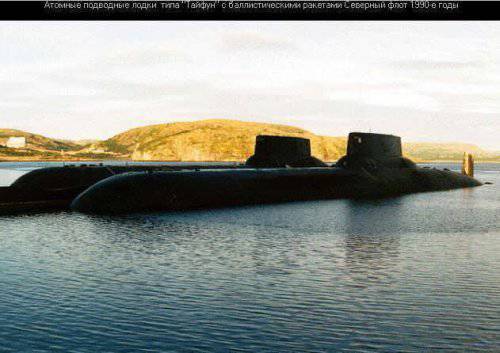
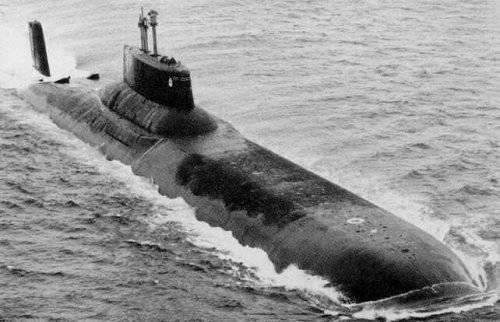
The production of missiles for testing started by 1991 at the Zlatoust Machine Building Plant with the rates of 3-5 missiles per year. By 1992, the full cycle of testing of the main engines and auxiliary engines of the first version of the rocket project was completed - using engines manufactured by the Yuzhnoye production plant (Dnepropetrovsk); Total conducted on 14-17 bench fire tests of all engines. Completed ground control of the control system. 7 launches were carried out from the stand (from the submersible - ist. - Zavyalov VS) before the flight tests of the rocket began. In the same year, funding for work was significantly reduced, production capacity allowed for the 1 rocket to be tested in the 2-3 of the year.
In June, 1992 was decided by the board of chief designers to develop a supplement to the draft design with equipping the 2 and 3 steps with fuel similar to the fuel of the 1 steps (OPAL-MS-IIM with HMX). This is due to the reprofiling of the fuel producer in the Ukraine - Pavlograd Chemical Plant - to produce household chemicals. Replacing the fuel reduced the power of the rocket, which led to a decrease in the number of warheads from 10 to 8 pcs. From December 1993 to August 1996, the 4 fire tests of the 2 th and 3 th engines were carried out on the OPAL fuel, the Conclusion on admission to flight tests was issued. As of August 1996, the development and ground testing of the charges of the engines of all three stages and the 18 charges of the control engines for the “Bark” SSBN has been completed. Engine charge developer - NPO Altai (Biysk), manufacturer - PZHO (Perm, East. - Zavyalov VS).
Joint flight tests with launches from a ground stand at the Nenox site began in November of 1993 (1-th launch). The second launch was held in December 1994. The third and final launch from the ground stand - 19 in November 1997. All three starts were unsuccessful. The third unsuccessful launch from the Nenoks site took place on November 19 1997, the rocket exploded after the launch - the structures of the landfill were damaged.
As of the end of 1997, the missile No.4 was in readiness for testing at the Zlatoust machine-building plant - its tests with adjustments for the results of the 3-th launch were planned for June 1998. Also, the plant had differently available missile numbers No.5 , 6, 7, 8 and 9 - by the margin of knots and details readiness was 70-90%. Taking this into account, 1998 was planned to be launched in 2 (missiles 4 and 5), 1999 in 2 launch (missiles 6 and 7) and with 2000 it was planned to start launches from SSBN 941Y " Dmitry Donskoy "(5 starts in 2000-2001). From 2002, it was planned to begin the deployment of the D-19UTTH complex on two converted SSBNs at 941 Ave. The technical readiness of the complex was at this point 73%. Willingness of converted SSBN Ave. 941U - 83,7%. The necessary costs for completing the tests of the complex according to the estimates by Makeev State Research Center are 2 billion 200 million rubles (in 1997 prices).
In November, 1997 by Russian government ministers J.Urinson and I.Sergeev in a letter to Prime Minister V.Chernomyrdin raised the issue of transferring the design of the main naval submarine ballistic missile to the Moscow Institute of Thermal Engineering.
In November and December, 1997 worked two Interagency Commissions, created by order of the Minister of Defense of Russia. The commission included representatives of the MIT, the Armaments Directorate of the Russian Ministry of Defense and the Strategic Missile Forces, who criticized the project - the missile used outdated decisions on the control system and warheads, propulsion systems, fuel, etc. At the same time, it should be noted that the resistance of the elemental base of a submarine-based ballistic missile launch vehicle (3 y) was higher than that of the Topol-M ICBM (2 u), the accuracy is almost the same. Combat blocks were worked out in full. The perfection of the 1 th and 2 th main engines was higher than the Topol-M ICBMs by 20% and 25%, the 3 th stages - worse by 10%. The mass perfection of the rocket was higher than that of the Topol-M ICBMs. The Second Interdepartmental Commission was recommended to continue the tests with the adoption of two SSBNs Ave. 941U.
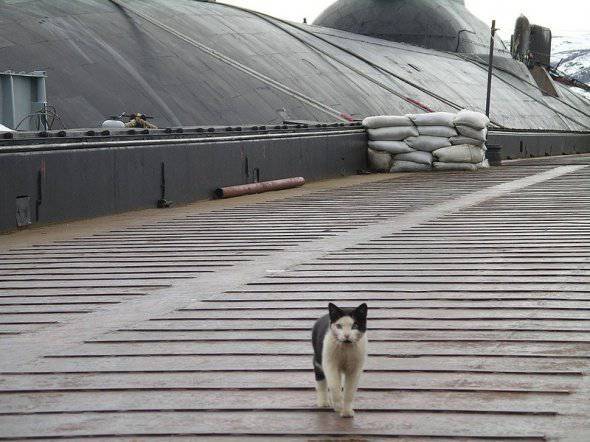
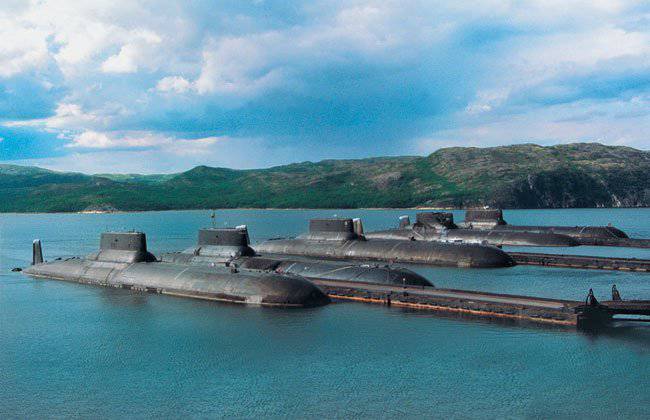
Representatives of the Arms Administration and the Strategic Missile Forces predicted the need for 11 launches in 2006-2007, the amount of costs - 4.5-5 billion rubles. and proposed to stop the development of SLBMs. Main reasons:
- development of the most unified interspecific missiles for the Strategic Missile Forces and the Navy;
- the separation by years of peaks in financing the rearmament of the Strategic Missile Forces and the Navy;
- cost savings;
At the beginning of 1998, the conclusions of the commission were approved by the Military-Technical Council of the Ministry of Defense of Russia. In January 1998, the issue was considered by a commission created by an order of the President of Russia. In the autumn of 1998, at the suggestion of the Commander-in-Chief of the Navy V. Kuroedov by the Russian Security Council, the Bark theme was officially closed after the competition under the auspices of Roscosmos (participants are MIT and Makeev State Concert Hall with the Bulava-45 project by Chief Designer Kaverin U. A.) The design of the Bulava SLBM at MIT began. At the same time, a redesign was started for the Bulava missile system of the SSBN 955 av. At the same time, control over the development of the SLBM was assigned to the 4 Central Research Institute of the Ministry of Defense of Russia (supervisor - V. Dvorkin), who previously was in charge of controlling the creation of ICBMs, and the "sea" 28 Central Research Institute of the Ministry of Defense of Russia was removed from the work on SLBMs.
Carriers:
- submersible launch complex PS-65М - used at the Nenoks site for test launches of SLBMs, 3 launch was carried out on 1998. The complex was prepared for testing by Sevmorzavod according to the resolution of the USSR CM from 28 November 1988. The use of PS-65M during missile tests was not confirmed .
- Experimental PLRB Ave. 619 - according to the resolution of the USSR Council of Ministers of 28 in November 1988, it was supposed to use an experimental PLRB for testing the D-19UTTH complex. The submarine was to be prepared for testing by Sevmorzavod.
- SSBN Ave. 941U "Shark" - 20 SLBM, it was supposed to replace the SLBM P-39 / SS-N-20 STURGEON on all boats of the project. In May, 1987 was approved the schedule of refitting SSBN Ave. 941 with the D-19UTTH missile system. Re-equipment was planned to be carried out at PO Sevmash according to the following schedule:
- Submarine serial number 711 - October 1988 g. - 1994 g.
- Submarine serial number 712 - 1992 - 1997.
- Submarine serial number 713 - 1996 - 1999.
- Submarine factory numbers №724, 725, 727 - planned to put on refurbishment after 2000.
At the time of closing the Bark theme, readiness of SSBN 941 Ave. Dmitry Donskoy was 84% - launchers were mounted, assembly and technological equipment was placed in the compartments, only ship systems were not installed (found at the manufacturing plants).
- SSNS Ave.955 / 09550 BOREI / DOLGORUKIY - 12 SLBMs, development of SSBNs for the D-19UTT missile system launched by Resolution of the USSR CM on 31 of October 1989 in 1998, the development of the SSBNs for the Bark complex was discontinued, and the BKC system was discontinued, and the XRUMN missile system was discontinued by the XMNXX XNUMX missile system. SLBM "Bulava".
The Bark was built and sharpened initially under the Sharks, to put it even more simply, it was an upgraded version of the P-39. Therefore, this rocket can no longer be small by definition. Let me remind you, because of the large dimensions of the Р-39, the Shark project boats were the only carriers of these missiles. The design of the D-19 missile system was tested on the K-619 diesel submarine specially refitted according to the 153 project, but only one P-39 shaft was placed on it and limited to seven launches of dummy models. Accordingly, potential “Boreas” should have been either a little smaller than “Sharks” or built up a hefty hump with the standard 667 design scheme. Quite possibly competent comrades in this matter will correct me and say that this is not so.
Further, why did you commission a MITA, who always dealt only with land rockets, to manufacture the new SLBM? I am not an expert, but I think that the creation of a solid-fuel compact naval rocket was the key point. Specialists from the SRC created a solid-fuel rocket, but it turned out to be huge and huge boats should be made for it (which is very “pleasing” to the military budget and the characteristics of the secrecy of these submarines). For me, so create, roughly speaking, chambered for weapon - stupid. But, unfortunately, precisely such a practice existed in the Soviet submarine shipbuilding. In addition, if memory serves, the Bark was thicker for shark submarine mines and a bit higher, i.e. more submarines would have to be significantly rebuilt. At this very time, MIT is stamping and has good groundwork for compact solid-fuel rockets. Still, putting a rocket on wheels (PGRK) is no less difficult than creating an SLBM. Therefore, it was considered that MIT will cope with this task, since they already have a compact rocket, it remains only to make it a “sea” one. With what we see, not so long ago they managed (not without a “bitch”, but when was it easy?).
Hence the question: did the military and the leadership foolishly do the "barge" idea with the "Bark"? I think, on the basis of budget opportunities, they chose the cheapest, but no less effective option.
So, at that time (the middle of the two thousandth) submarines "Shark" is no longer (even today, the three remaining "Sharks" hung between the "sky and the earth"), but there is no such thing as "Borey" (now, thank God there are three). We still have several Dolphin boats of the 667 project, (7 kdits + 2 (3) "Squid"). The military, seeing that with the “Bulava” while “not glory to God”, did not begin to breed panic, but pulled out the “trump card” from the sleeve. KB them. Makeeva very successfully modernized the RSM-54 rocket, which was called the "Sineva". According to the characteristics of energy efficiency (the ratio of the starting weight, 40,3 tons, and the combat load, 2,8 tons), brought to flight range, the "Blue" surpasses the American missiles "Trident-1" and "Trident-2". The rocket is a three-stage, liquid, and carries from 4 to 10 warheads. And recently, during a test launch hit the target at a distance of 11,5 thousands of miles. In 2007, President Putin signed a decree adopting the Sinev missile. By government decree, the Krasnoyarsk Machine-Building Plant urgently resumes mass production of the upgraded RSM-54 rocket. Production facilities that were recently closed by a decision of the same government are being re-maintained. The enterprise has been allocated 54 million rubles for the deployment of PCM-160 production.
Then the thought even began to speak out in the press: why do we need “Bulava” if there is “Sinev”? Maybe "Borea" for her remake? The commander in chief commented on this clearly: “We will not alter the strategic submarines of the Borey type under the Sinev complex. Simple talkers and people who are completely unaware of the problems of the fleet and its weapons speak of the possibility of re-equipping these boats. We can not put on the newest submarines, though a reliable rocket, but related to the technology of the last century. "
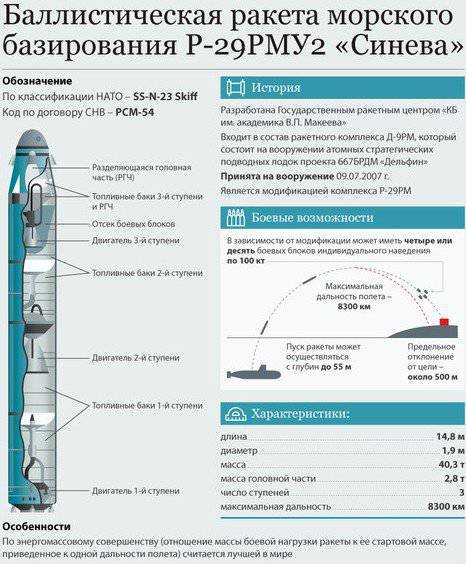
"Makeyevtsy" see this offended and decided to modernize. In October, the X-NUMX test of the P-2011RMU 29 Liner (a modification of the Sinevy, to which one of the main complaints was about overcoming the missile defense), was deemed successful and the missile was approved for mass production. .
In February, 2012, commander-in-chief of the Navy, V. Vysotsky, stated that the “Liner” should not be put into service, since “this is an existing missile that is being modernized”. According to him, strategic submarines on operational duty in the World Ocean were the first to receive the upgraded missile, but in the long run all ships of the 667BDRM “Dolphin” and 667BDR “Kalmar” projects will be re-equipped on the Liner. Due to the rearmament of the "liner" the existence of the north-western grouping of submarines "Dolphin" can be extended to 2025 — 2030 year.
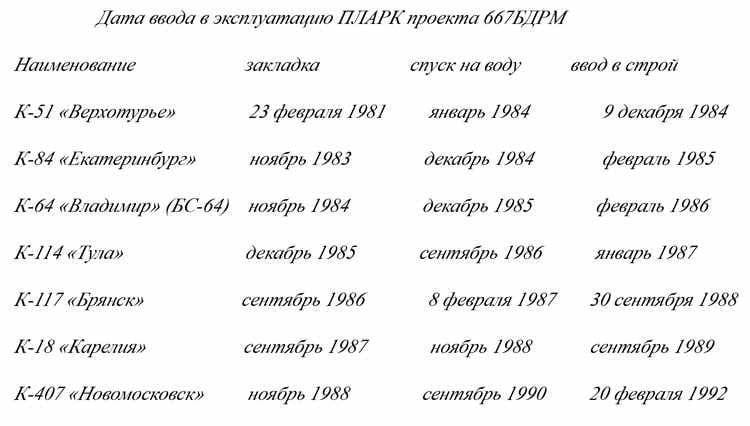
It turns out that the liquid propellant missiles and boats of the 667 project will serve as our command. alternate, if suddenly “Boreas” with “Bulava” fail. Reinsured in one word.
However, a curious one was created and the situation is not completely clear to me:
- 8-10 "Boreev" will be built for the Bulava solid-fuel rocket (at last, the analogue of the Trident-2 is finally done, although they write ... the range of the Bulava is less than that of the Trident-II, at least 2000 km, and the drop weight is only 1150 kg against 2800. But we must remember that the maximum range and maximum PN for the “Trident” in the best PR tradition are given for different configurations (maximum range from the minimum PN to half a ton (4 BB by 100 kt), and the maximum drop weight when starting 7,8 is thousand). , and none of these configurations on alert is worth it. to which real BR "Trident II" fly on the same 9800 and carry the same 1,3 t). The rocket is modern, solid propellant, and therefore the occurrence of emergencies like that of Captain Britanov is impossible. These are (3x16) + 5 (7) x20 = 188 or 148 delivery vehicles.
- However, "Mace" and the Borei submarines themselves are a new product, therefore, they will save (10 for years) the Dolphin submarines of the Dolphin project (for brevity, I will call it this way), which have been upgraded, have been tested and equipped with reliable and liquid missiles. This is just about the 112 delivery vehicles.
- Three more left 941 submarines of the project, capable of carrying 20 missiles. It is doubtful, but suppose still 60 delivery vehicles. In total, we have a decent scatter in delivery methods: from 260 to 360.
Why all these calculations? Under the START-3 agreement, each of the parties is entitled to 700 (+ 100 unwrapped) delivery vehicles (more simply, rockets) and that’s the whole triad! Considering that for calculating the total limit number of warheads each deployed and non-deployed heavy bomber is counted as one unit by the accounting rules, I am not inclined to consider that in the next 10 years strategic Aviation will increase. As there were 45 bombers, they will be kept in this limit until PAK DA appears. It is possible that some of them will be used as non-deployed forces. With all due respect to my comrades in strategic aviation, but given the current level of air defense and the ability to intercept a potential adversary, the possibility of completing the task has a very low probability. It is possible that with the advent of hypersonic stratospheric devices, the situation will radically change, but now the main role is played by the marine and land components of the triad.
Then 700-45 / 2 = 327,5 (if we take strategic aviation away, we get that on each of the components of the triad, on average, 327 remains on the delivery vehicles). Since historically we have developed the prevalence of land-based SNFs (as opposed to the United States), I have great doubts that seafarers will be allowed to have 360 delivery vehicles on 19 submarines (for comparison, the "sworn friends" are now 12-14 SSBNs, although they have this is the basis of the SNF).
It is not clear what will be done with “Sharks”: to rebuild them under the “Bulava”, it is expensive, and it means “to kill” several new “Boreas”. It is a pity to saw on metal, the boats have not yet exhausted their resources. Leave as an experimental platform? It is possible, but for this and one boat is more than enough. Redo them under multipurpose PLA (as the US did with some of the "Ohio")? But the boat was originally created purely for action in the Arctic, and cannot be used elsewhere. The best option is to carry out modernization under the Bulava, but leave them as a reserve or non-deployed nuclear forces, and use one boat as an experimental platform. Although it is not very economical.
But,
“In March, 2012 of the year, information appeared from sources of the Russian Ministry of Defense that the strategic nuclear submarines of the 941 Shark project would not be upgraded for financial reasons. According to the source, the deep modernization of one "Shark" is comparable in cost to the construction of two new submarines of the 955 "Borey" project. The Arkhangelsk submarine cruisers TK-17 and Severstal TK-20 will not be upgraded in the light of the recent decision, the Dmitry Donskoy TK-208 will continue to be used as a test platform for weapon systems and hydroacoustic systems up to 2019. ”
Most likely at the output, or rather to 2020, we will have 10 (8) Boreev and 7 Dolphins (I am sure that the Squids will be written off in the near future, for the boats have already been in 30 years). These are already 300 (260) delivery vehicles. Then they will begin to write off the oldest of the “Dolphins”, gradually making the solid-fuel “Bulava” the basis of the marine SNF. By this time (God forbid) they will create a new heavy ICBM instead of the “Governor” (possibly the Makeev Design Bureau, and they will work), will use the Barku developments, and if they made a naval counterpart from the land, then on the contrary more difficult) and therefore the preservation of 188 marine vehicles is sufficient.
The fact that 5 generations will be used for the generation will not even dare to suggest, but one thing is for sure: it is necessary to deal with this issue ahead of time.
In addition, I ask you not to be very angry with me if the NATO classification and the Russian one are used together, and for some mistakes in some terms.
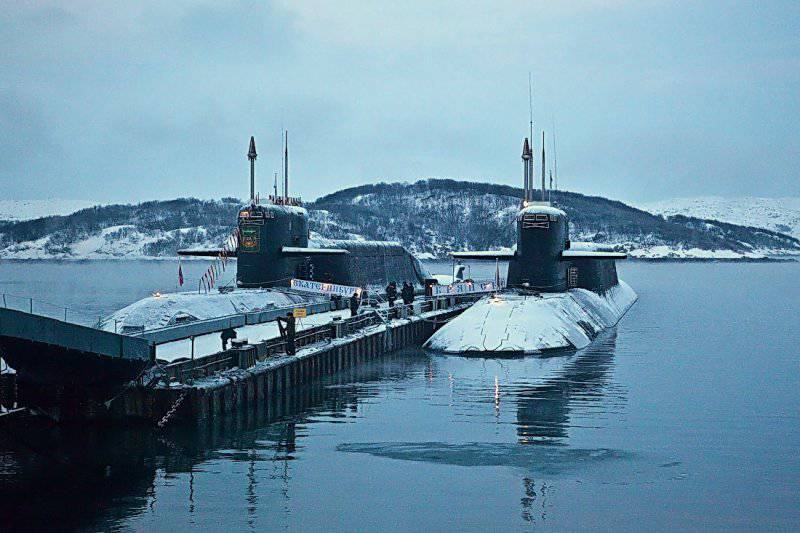

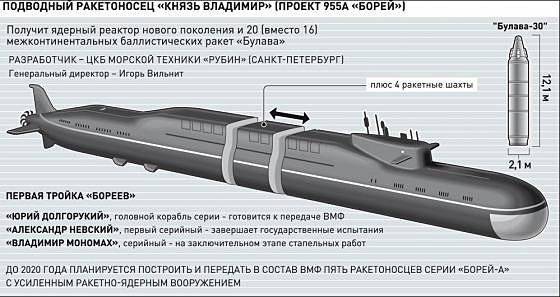
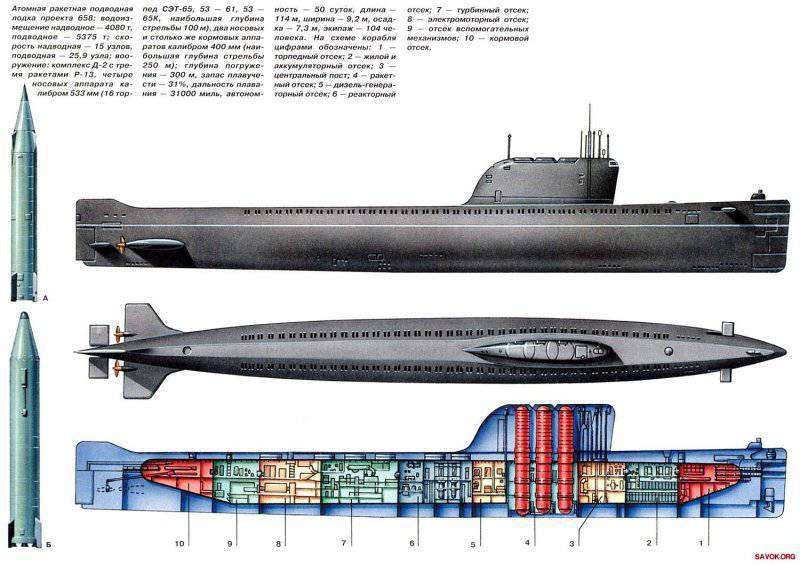
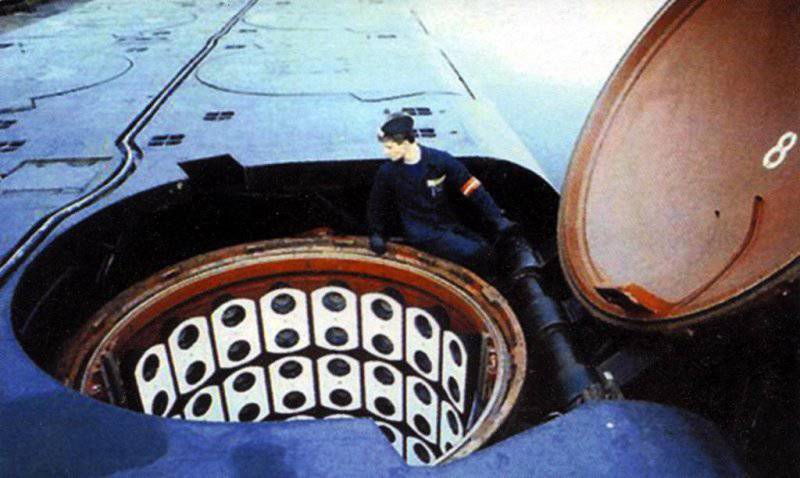
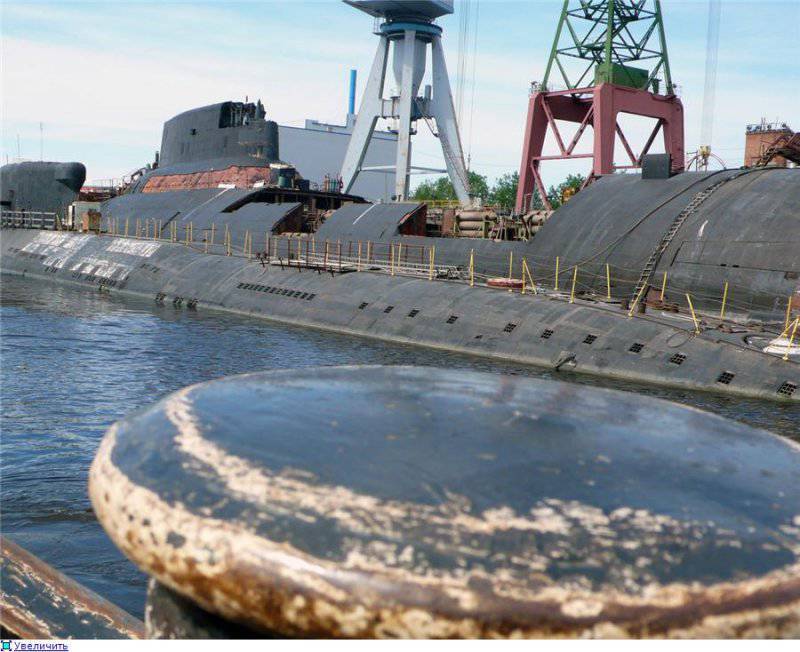
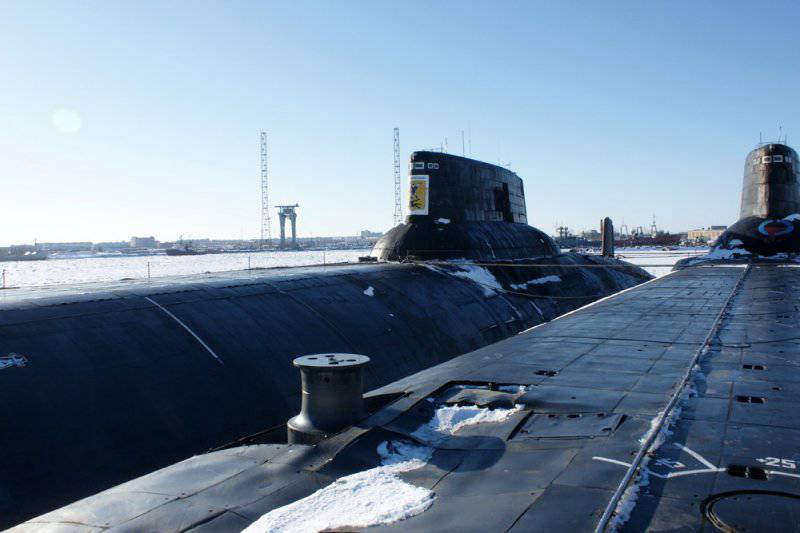
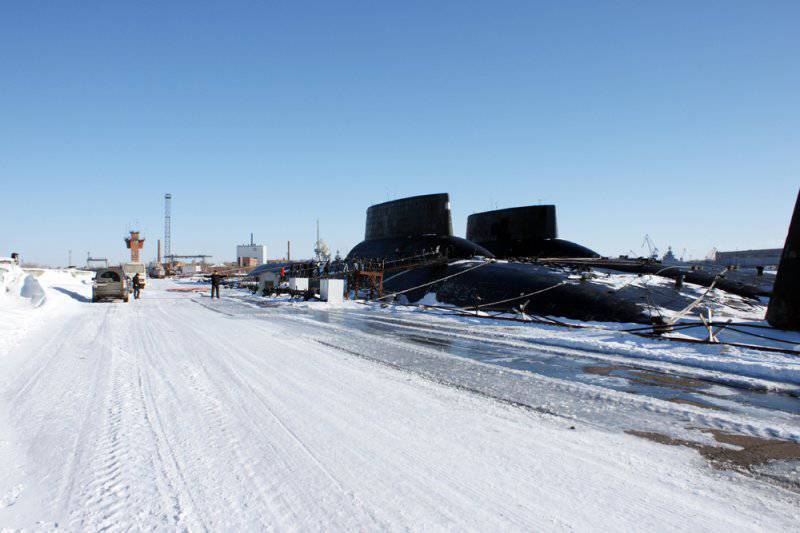
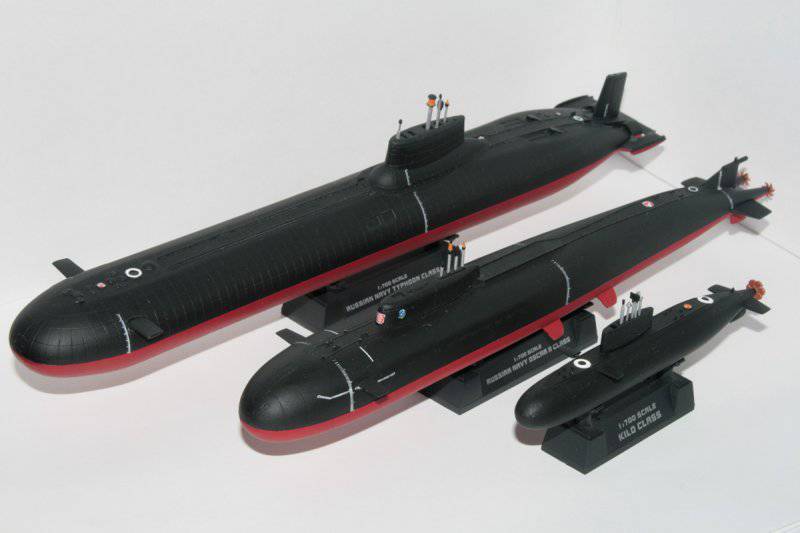
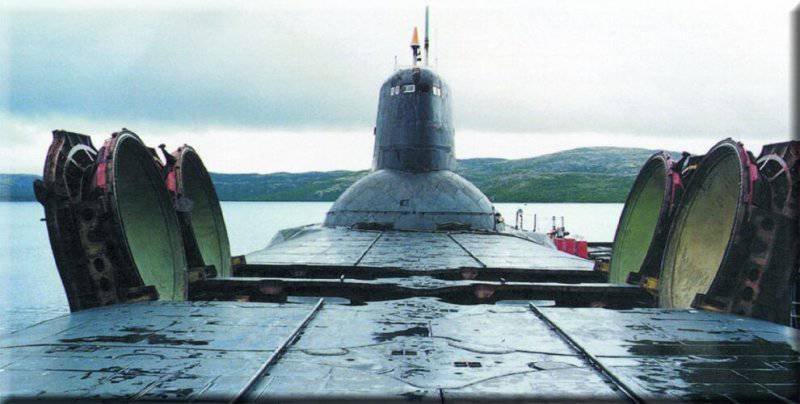
Information